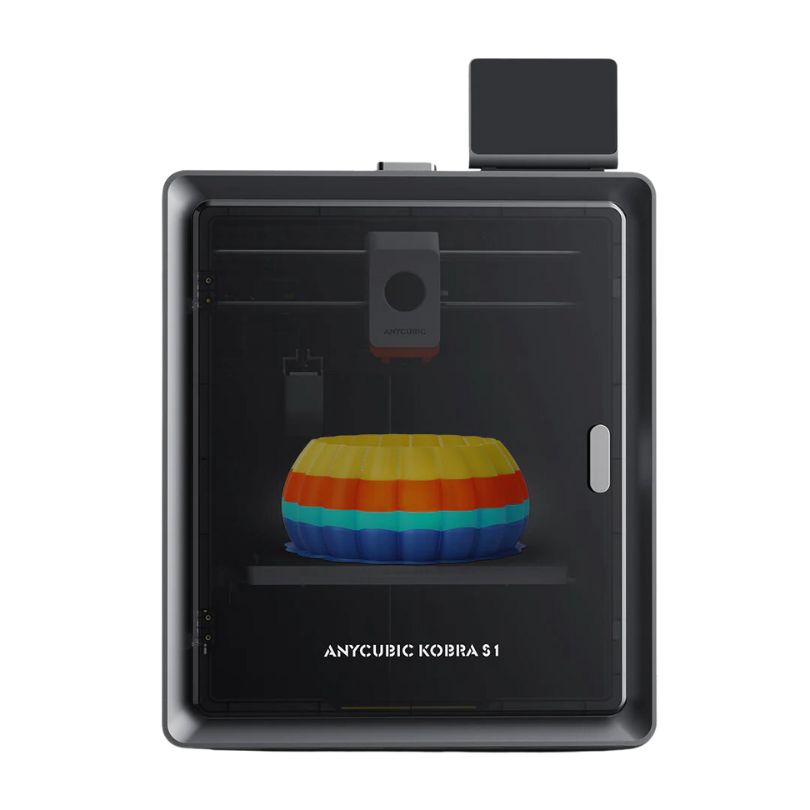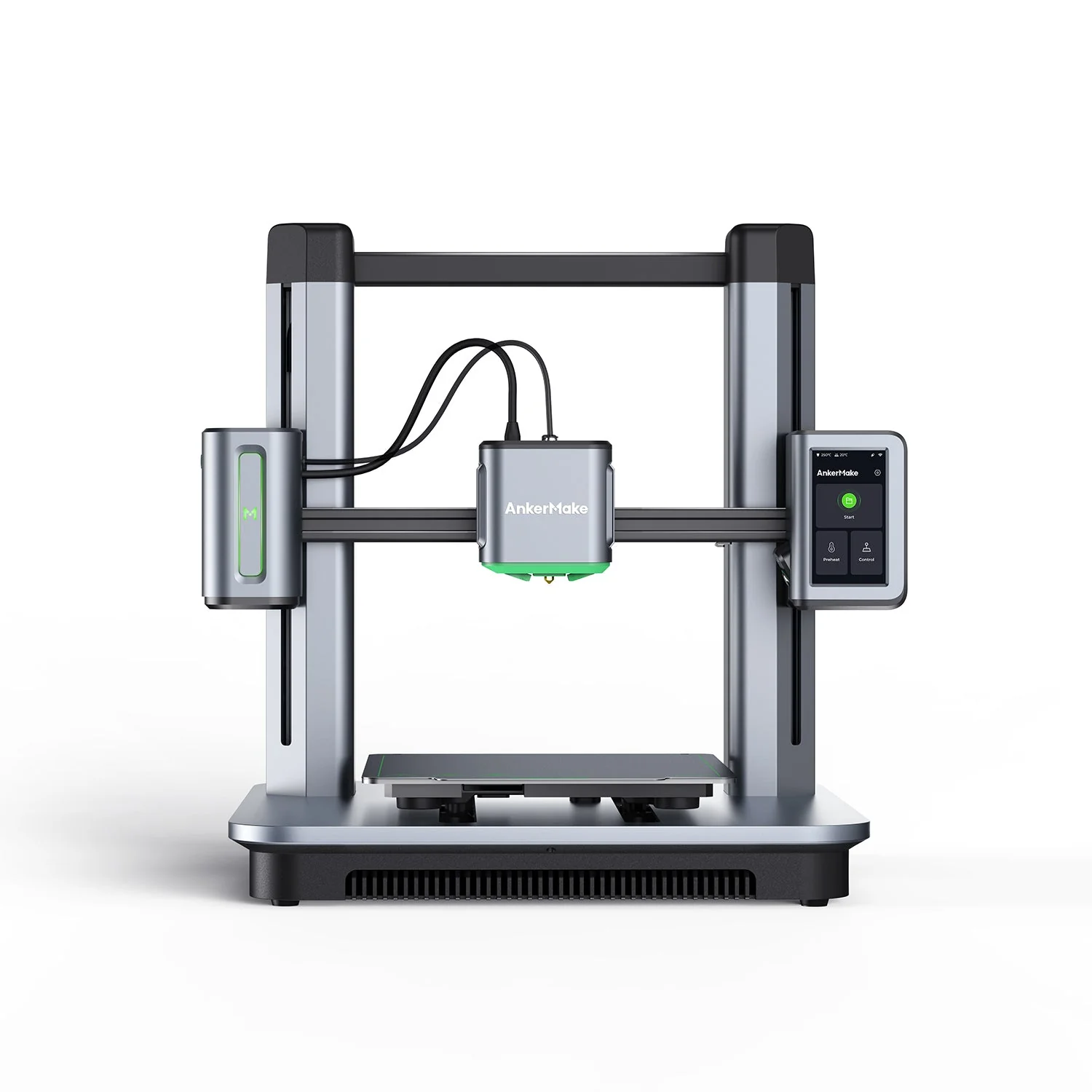Compare Kobra S1 Combo vs M5
Comparison between the best 3D printers
Choose the best 3D printer at the best price. The cheapest 3D printers are here.
Buy a 3D printer here with 3D Fila.
 |
 |
|
| Model | Kobra S1 Combo[BUY Kobra S1 Combo] |
M5 |
| Printing Material | Filament | Filament |
| Buy Filament for Anycubic Kobra S1 Combo | Buy Filament forAnkerMake M5 | |
| Estimated price | $599,00 | $497,00 |
| Manufacturer | Anycubic | AnkerMake |
| Release Year | 2025 | 2023 |
| Print Volume [mm] | 250x250x250 | 235x235x250 |
| Printer Size [mm] | 400x410x490 | 502x438x470 |
| Weight [kg] | 18 | 12,6 |
| Power Loss Recovery | YES | YES |
| Enclosed printer | YES | NO |
| Bed Leveling | Automatic | Automatic |
| Filament End Sensor | YES | YES |
| Bed type | Heated | Heated |
| Power supply system | Direct Drive | Direct Drive |
| Standard nozzle | 0,4 | 0,4 |
| Maximum Nozzle Temperature [°C] | 320 | 260 |
| Maximum Bed Temperature [°C] | 120 | 100 |
| Maximum printing speed [mm/s] | 600 | 500 |
| Filament holder | YES | YES |
| Camera for supervision | YES | YES |
| Recommended filaments | PLA, PETG, TPU[1], ABS, ASA | PLA, PETG, ABS |
| Recommended slicers | Anycubic Slicer Next, Orca Slicer | AnkerMake Studio (macOS, Windows), Simplify3D, Ultimaker Cura, PrusaSlicer |
| Maximum Resolution [mm] | 0,01 | 0,1 |
| Processor | ||
| Display | Touchscreen 4,3'' | Touchscreen 4,3'' |
| Power Supply | 350 W | |
| Connectivity | USB, Wifi | Wi-Fi, USB-C, OTA Upgrade |
| Operating systems | Windows, Linux e Macbook | Windows, Linux, Macbook |
| Date of registration in the system | 2025-02-25 | 2024-07-08 |
| Release date | 2025 | 2023 |
| Extra features | The Anycubic Kobra S1 Combo is a fully enclosed CoreXY 3D printer with speeds up to 600mm/s and 20,000mm/s² acceleration. It features a 320°C hotend, native multicolor printing (4 to 8 colors with ACE Pro), and active filament drying. Equipped with LeviQ 3.0 auto-leveling, camera monitoring, AI failure detection, carbon filtration, and a 4.3 touchscreen, it ensures high-quality, efficient, and reliable 3D printing. | The AnkerMake M5 printer stands out for its impressive print speed, reaching up to 500mm/s. It features AI print monitoring, an integrated camera for creating timelapses, auto-leveling bed with pressure sensor, direct extruder, flexible PEI-coated build plate, and Wi-Fi and USB-C connectivity. Assembly is quick and easy, and the printer is designed to deliver high print quality and ease of use. |
| Support for multiple colors and materials (AMS and CFS) | YES | NO |
Notes * |
||
| Cost-benefit | 7 / 10 | 7 / 10 |
| Hardware | 8 / 10 | 4 / 10 |
| Tela | . | . |
| Print volume | 3 / 10 | 3 / 10 |
| Performance | 5 / 10 | 4 / 10 |
| [BUY Kobra S1 Combo] |
Conclusion |
| In comparing the Anycubic Kobra S1 Combo and the AnkerMake M5, both 3D printers have their own set of strengths and weaknesses that cater to different user needs and preferences. The Kobra S1 Combo offers a larger print volume, a fully enclosed design, and advanced features such as higher maximum nozzle and bed temperatures, enabling it to work with a wider variety of filaments and produce high-quality prints. Its automatic leveling and camera supervision add to the printer's reliability, making it suitable for those looking for efficiency and quality in their 3D printing tasks. However, it comes at a higher price point. On the other hand, the AnkerMake M5, while slightly cheaper, still delivers commendable performance with its impressive printing speed and ease of assembly. It lacks an enclosure and some advanced features like multicolor printing, yet it remains a strong contender for beginners and casual users who prioritize user-friendliness and affordability. The M5 also supports a broad range of operating systems and offers flexible connectivity options. Ultimately, the choice between the two models should be guided by what features are most critical to the user. The Kobra S1 Combo is better suited for those who prioritize versatility, advanced capabilities, and quality, while the AnkerMake M5 appeals to those seeking a reliable, budget-friendly option for straightforward 3D printing. Both printers are highly rated for their cost-benefit and hardware attributes, making them viable options in their respective niches. |

